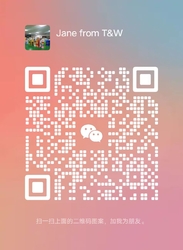POP Cardboard Displays effectively showcase product features through the following methods, integrating design key points from search results with display logic:
1. Visual Enhancement Design
Three-Dimensional Design
Using three-dimensional structures to highlight product form increases visual memorability by 200% compared to print ads, focusing on product outlines or usage scenarios.
For example, cosmetics displays are often designed with petal-shaped, three-dimensional brackets to emphasize the product's natural attributes.
Minimalist Visual Elements
Following the principle of "less is more," each display card only highlights one or two core selling points (such as "organic ingredients" or "limited edition") to avoid information overload.
2. Layered Information Presentation
Dynamic Combination of Text and Image
High-definition product images capture attention in the primary visual area (occupying over 60% of the screen).
Key data (such as "24-hour long-lasting makeup") is highlighted in extra-large font in the auxiliary text area.
Minimized Pricing
Pricing information is placed on the side or bottom, with the product's value primarily conveyed through design and color.
3. Scenario-Based Storytelling
Thematic Displays
Design storytelling scenarios based on the product's tone (e.g., camping gear paired with a paper tree background) to enhance emotional connection.
Interactive Experiences
Add interactive elements like flip-up labels and pull-out sample cards to extend customer retention.
4. Terminal Synergy
Integrate with the Counter
Use a color scheme consistent with the shelf, while creating visual contrast through uniquely shaped structures.
DP Point Interactions
Set up a series of display racks in popular areas of the mall to create a brand visual matrix.
(Note: Specific implementation should refer to the AIDA model--the consumer behavior path of Attention, Interest, Desire, and Action.)

 Your message must be between 20-3,000 characters!
Your message must be between 20-3,000 characters! Please check your E-mail!
Please check your E-mail!  Your message must be between 20-3,000 characters!
Your message must be between 20-3,000 characters! Please check your E-mail!
Please check your E-mail! 

